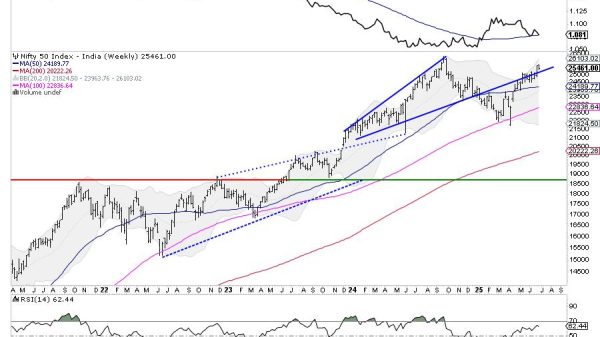The Guide to Profitable Forex Strategies 2024
In the dynamic world of Forex trading, 2024 brings new opportunities and challenges. This comprehensive guide explores the most profitable Forex strategies for 2024, aimed at both beginners and experienced traders.
50-Pips a Day Forex Strategy
The 50-Pips a Day Forex Strategy is a simple yet effective trading approach. It targets a daily goal of earning 50 pips, focusing mainly on the major currency pairs.
Traders start by identifying the currency pair’s high and low points from the previous day. They then set two pending orders: a buy order above the previous day’s high and a sell order below the previous day’s low.
Once the market hits one of these orders, the strategy suggests canceling the other order. The aim is to capture the market’s initial move at the beginning of the trading day.
Traders set a stop loss of 20-30 pips to manage risk and a take profit of 50 pips. This strategy works best in a market with a clear trend, as it relies on capturing early daily movements. It’s popular for its simplicity and the clear, achievable daily goals it sets.
The Daily Chart Forex Strategy 2024
The Daily Chart Forex Strategy focuses on long-term market movements by analyzing daily chart time frames.
Traders using this strategy examine the daily charts to identify overall trends and key support and resistance levels. They typically make trading decisions based on the end-of-day data, which helps filter out the noise and fluctuations of shorter timeframes.
In this strategy, traders look for clear signals such as trend line breaks, price action patterns, and technical indicator readings. They often combine this analysis with fundamental factors to strengthen their trading decisions. The strategy involves fewer transactions, targeting larger gains per trade with wider stop losses to accommodate the daily market volatility.
Since the strategy focuses on the bigger picture, it requires patience and a long-term perspective.
Traders need to resist the urge to react to short-term market movements, staying focused on their analysis of the daily charts. The Daily Chart Forex Strategy is popular among traders who prefer a less hectic, more planned approach to Forex trading.
The Forex 1-Hour Trading Strategy 2024
The Forex 1-Hour Trading Strategy involves making trades based on the 1-hour chart timeframe. Traders using this strategy typically scan the 1-hour charts to identify clear trends or trading patterns.
The strategy often combines the use of technical indicators like moving averages, RSI (Relative Strength Index), or MACD (Moving Average Convergence Divergence) to find potential entry points.
Buy Rules:
Identify a clear uptrend in the 1-hour chart. Look for the price to return to key moving averages, like the 50-period or 100-period moving average, as a potential buy signal. Confirm the buy signal with an RSI reading above 50 or a bullish crossover in the MACD. Enter the trade once these conditions align. Set a stop loss below the recent swing low to manage risk.Sell Rules:
Identify a clear downtrend on the 1-hour chart. Wait for the price to approach or touch a key moving average, suggesting a potential selling opportunity. Look for a confirming sell signal, like an RSI reading below 50 or a bearish crossover in the MACD. Enter the sell trade when these criteria are met. Place a stop loss above the recent swing high for risk control.This strategy requires traders to closely monitor the 1-hour charts and make quick decisions. It’s popular among traders who can dedicate a few hours each day to analyze and trade, aiming for moderate gains with controlled risk.
The Forex Weekly Trading Strategy 2024
The Forex Weekly Trading Strategy focuses on analyzing and making trades based on the weekly chart timeframe.
In this strategy, traders concentrate on longer-term trends and price action trading patterns to make their trading decisions. The approach is less about frequent, short-term gains and more about identifying significant moves in the market that can offer substantial returns over time.
Price action trading patterns play a crucial role in this strategy. Traders look for specific patterns like pin bars, engulfing candles, or inside bars on the weekly charts. These patterns often indicate potential reversals or continuations in the market trend.
Here’s how traders typically apply this strategy.
Identify Major Trends: Traders examine the weekly charts to spot overall trends in currency pairs.
Look for Price Action Patterns: Within these trends, traders search for clear price action signals, such as a bullish pin bar at a support level in an uptrend or a bearish engulfing pattern at a resistance level in a downtrend.
Consider the Context: They assess these patterns in the context of recent price movements and macroeconomic factors to validate their potential.
Entry and Exit Points: Traders enter trades based on the confirmation of these patterns and set their exit points (take profit and stop loss) based on key levels seen on the weekly chart.
This strategy requires patience, as trades may take weeks or even months to reach their full potential.
The Forex Weekly Trading Strategy is popular among traders who prefer to take a less hands-on, more strategic approach, avoiding the noise and stress of short-term trades fluctuations.
Price Action Trading Forex Strategies
Price Action Trading Forex Strategies focus on interpreting and making decisions based on the movement of prices themselves, rather than relying on external indicators.
Traders using these strategies examine the historical and current price movements to predict future market behavior. This approach revolves around understanding what the price is telling you about market sentiment and potential future movements.
In practice, traders look for specific patterns in the price charts, such as pin bars, engulfing candles, head and shoulders, and triangles. These patterns, formed by the price itself, often indicate a likelihood of future market direction. For instance, a pin bar near a significant level of support or resistance can signal a potential reversal.
Key aspects of Price Action Trading include:
Chart Reading: Traders become proficient in reading and interpreting bar charts or candlestick patterns. Support and Resistance Levels: Identifying these levels helps traders understand where the price might experience barriers. Trend Analysis: Understanding whether the market is in an uptrend, downtrend, or ranging is crucial. Trade Execution: Decisions to enter or exit a trade are based on the interpretation of the price patterns and market trends. Risk Management: Traders set stop losses and take profits based on key price levels and personal risk tolerance.Price Action Trading is a popular strategy among Forex traders due to its direct approach, relying solely on price movements without the need for additional indicators. This strategy requires a good understanding of market psychology and a disciplined approach to trading.
The 4-Hour Forex Trading Strategy
This Forex trading strategy involves conducting analysis and making trades based on the 4-hour chart timeframe. Traders using this strategy typically examine the 4-hour charts to identify market trends, key support and resistance levels, and potential entry and exit points.
Here’s how the strategy typically works:
Identify the Trend
Look at the 4-hour chart to determine the current trend direction. Use trendlines, moving averages, or other technical indicators for clarity.
Find Entry Points
Once the trend direction is clear, seek potential entry points. This could involve waiting for price pullbacks within an uptrend or rallies in a downtrend.
Use Indicators for Confirmation:
ply technical indicators like the Relative Strength Index (RSI) or the Moving Average Convergence Divergence (MACD) to confirm the trade signals suggested by price movements.
Set Stop Losses and Take Profits
ace stop losses to manage risk effectively and set take profit levels based on key price points identified on the chart.
Monitor and Adjust
Keep an eye on the trade once entered, and be ready to adjust stop losses or take profits as the market moves.
The 4-Hour Forex Trading Strategy is popular among traders who can dedicate time to monitor the markets throughout the day and prefer not to hold positions overnight, offering a balance between the fast-paced nature of day trading and the long-term approach of swing trading.
The Counter-Trend Forex Strategy
The counter trend strategy in Forex involves trading against the prevailing market trend. Traders using this strategy aim to capitalize on potential reversals in the market. Here’s how it typically works:
Identify Potential Reversals
Traders look for signs that the current trend is weakening. This might include technical indicators signaling overbought or oversold conditions, or price patterns like double tops or double bottoms.
Confirm with Indicators
They use technical indicators such as the Relative Strength Index (RSI) or Stochastic Oscillator to confirm potential reversal points.
Enter Trades at Key Levels
Once a potential reversal signal is confirmed, traders enter trades at strategic points, like near key support or resistance levels.
Set Stop Losses and Take Profits
They place stop losses just beyond the recent highs or lows of the trend to manage risk and set take profits where the price is expected to reverse.
Monitor Closely
Since counter-trend trading can be risky, traders closely monitor their positions and adjust stop losses and take profits as needed.
This strategy suits traders who are comfortable with a higher risk approach and have the skills to identify and act on potential market reversals.
The most popular trading strategies for beginners
Day Trading Strategies
These involve opening and closing trades within the same trading day. Traders capitalize on short-term market movements, often using technical analysis and news events to make quick decisions.
Swing Trading Strategies
Swing traders hold positions for several days or weeks, aiming to profit from short to medium-term trends. They use a combination of technical and fundamental analysis to identify potential price movements.
Position Trading Strategies
Position traders focus on long-term trends, holding trades for months or even years. They rely heavily on fundamental analysis, supplemented by technical indicators, to identify and follow major market trends.
Algorithmic Trading Strategies
These use computer algorithms to execute trades based on predefined criteria, such as price movements or trading volume. Algorithmic strategies can include high-frequency trading, arbitrage, and trend-following systems.
Seasonal Trading Strategies
These strategies capitalize on predictable seasonal patterns in markets, such as increased energy demand in winter or agricultural cycles. Traders analyze historical trends and patterns to make trades at specific times of the year.
Long-Term Trading Strategies
Long-term or long position traders invest with a horizon of several years, focusing on the fundamental value and long-term growth potential of assets. They often adopt a buy-and-hold strategy, weathering short-term market fluctuations.
The best trading strategies by asset class,
The best trading strategies often vary by asset class, as each class has its unique characteristics and market dynamics. Here’s a breakdown of effective strategies for different asset classes:
Equities (Stocks)
Value Investing: Focusing on undervalued companies with strong fundamentals for long-term growth. Growth Investing: Targeting companies with high potential for future earnings growth. Momentum Trading: Capitalizing on stocks with strong recent performance, expecting the trend to continue.Dividend Investing: Investing in companies with high dividend yields for steady income.
Forex (Currency Pairs):
Carry Trade: Profiting from the interest rate differential between two currencies. Trend Following: Using technical analysis to trade in the direction of the current market trend. Range Trading: Capitalizing on currencies trading within a consistent range. Commodities: Buy and Hold: Investing in commodities for the long term, often as a hedge against inflation. Trend Following: Similar to Forex, following the established trend in commodity prices. Fundamental Analysis: Trading based on supply and demand dynamics, geopolitical events, and economic data.Bonds:
Laddering: Investing in bonds with different maturities to manage interest rate risk. Barbell Strategy: Investing in short-term and long-term bonds, but avoiding intermediate maturities. Credit Spread Strategies: Capitalizing on the yield differences between different types of bonds. Options: Covered Calls: Selling call options on stocks you own to generate income. Protective Puts: Buying put options to protect against a decline in the value of your stock holdings. Iron Condors: Combining bear calls and bull put spreads to profit from low volatility.Cryptocurrencies
HODLing: Long-term holding, based on belief in the asset’s future appreciation. Day Trading: Taking advantage of the high volatility in the crypto market for short-term gains. Scalping: Making numerous trades for small profits throughout the day.Each asset class requires a different approach based on its volatility, market cycles, liquidity, and other factors. Traders should also consider their own risk tolerance, investment goals, and the amount of time they can dedicate to managing their trades.
Conclusion
Currency Market Analysis remains a critical component of Forex Strategies 2024. Traders who regularly analyze market trends, geopolitical events, and economic indicators are better positioned to anticipate market movements.
Profitable Trading Techniques in 2024 focus on understanding market trends and using this knowledge to execute trades. Techniques like High-frequency Forex Trading and Swing Trading Strategy can be lucrative but require a deep understanding of market dynamics.
Forex Signal Services are becoming increasingly popular, especially among beginners. These services provide valuable insights and trading signals, helping traders make informed decisions.
High-frequency Forex Trading is for those who prefer a fast-paced trading environment. This form of trading involves making quick decisions based on short-term market movements, requiring a good grasp of market psychology and a solid risk management strategy.
Currency Pair Selection is a vital aspect of Forex trading. In 2024, traders are focusing on pairs that offer stability and predictability, especially for long-term trades.
Forex trading in 2024 offers a range of strategies for traders at all levels. Whether you are a day trader, a long-term trader, or somewhere in between, the key to success lies in choosing a strategy that aligns with your goals, risk appetite, and trading style. With the right approach and continuous learning, Forex trading can be a profitable venture in the dynamic financial landscape of 2024.
The post The Guide to Profitable Forex Strategies 2024 appeared first on FinanceBrokerage.






















